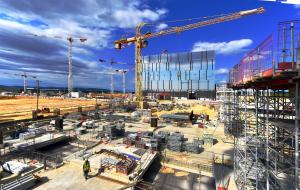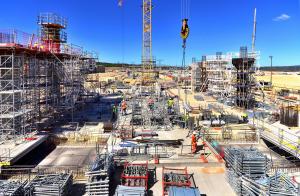The cold factory
25 Jul 2016
In order to maintain 10,000 tonnes of magnets at superconducting temperature, to cool the thermal shield and to feed the cryopumps, ITER will need to circulate huge quantities of cooling fluids.
As a consequence, the ITER cryoplant (worksite pictured) will be deliver 75 kW of combined cooling power.
The soccer-field-size installation will comprise three identical plants to store and circulate liquid helium (at a temperature of 4 K or minus 269 °C) throughout the installation.
Helium is not the only ultra-cold fluid that the cryoplant will produce. Liquid nitrogen, at a temperature of minus 196 °C, will be used as a "pre-cooler" in the liquid helium plants.
On the site of the cryoplant, not far from the Poloidal Field Coils Winding Facility, the foundations are in place. Work is now focused on the construction of the columns that will support the cranes for the installation's maintenance and on the slabs that will support the heavy megawatt-class screw compressors and high-speed turbines.
The building structure should be delivered in April 2017.



